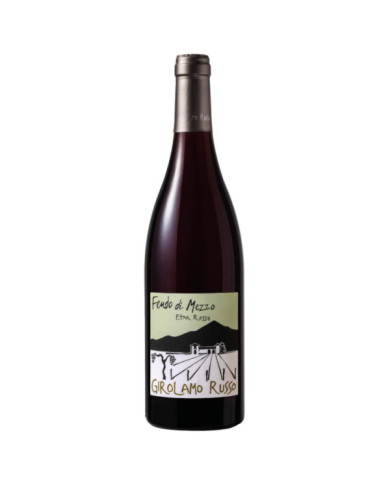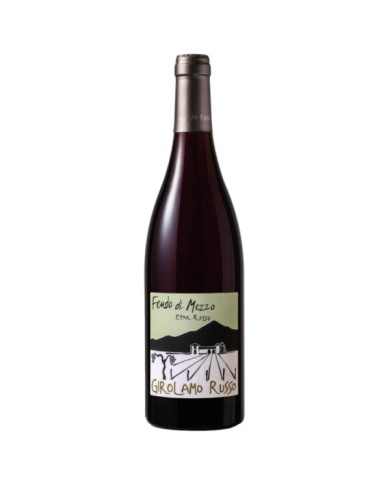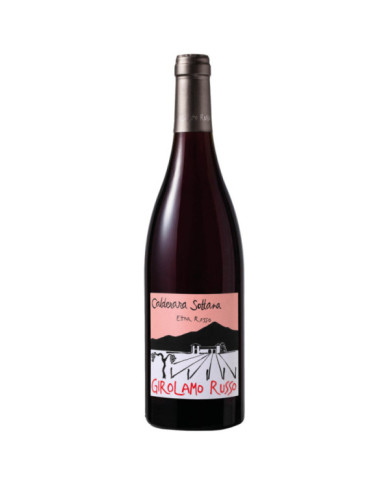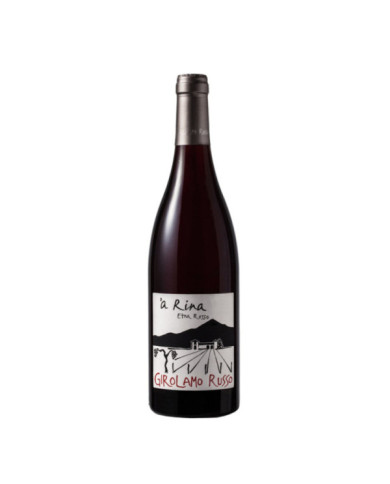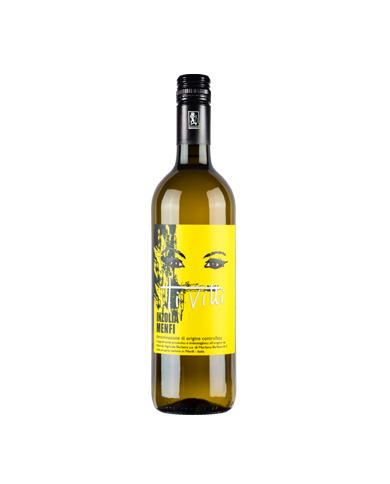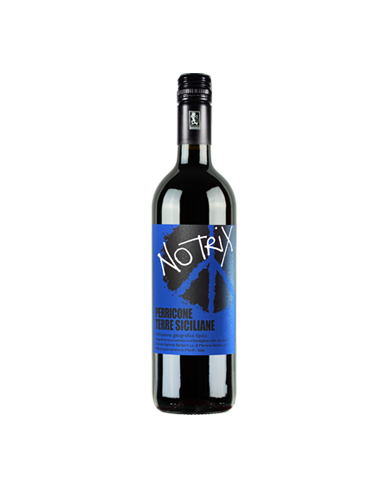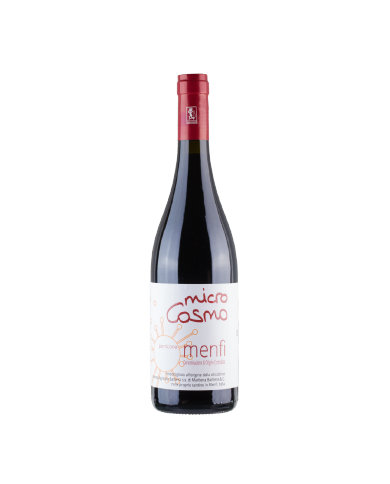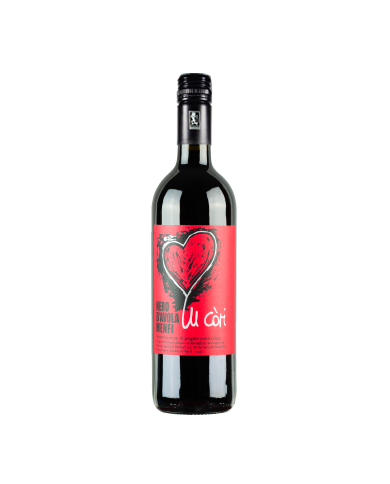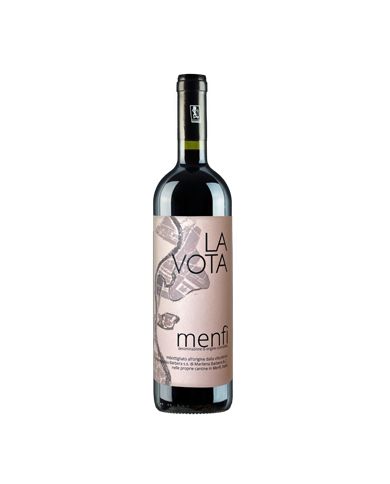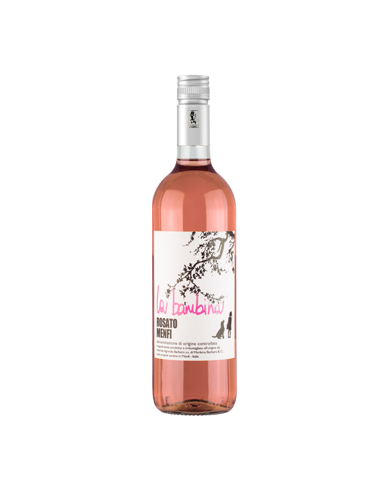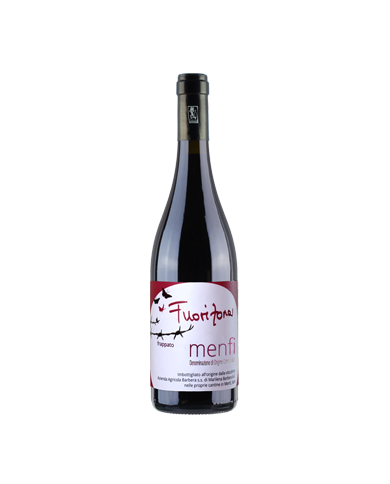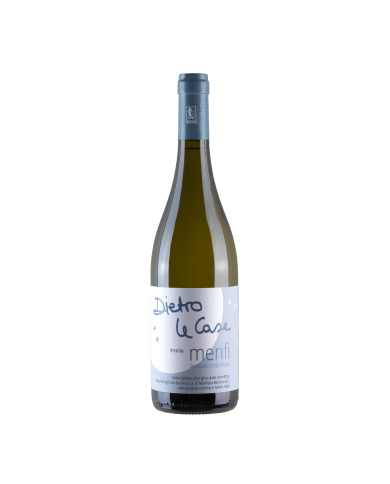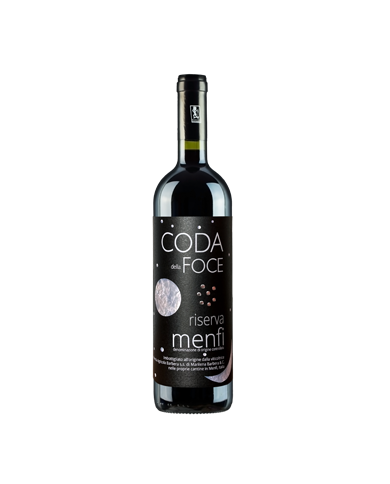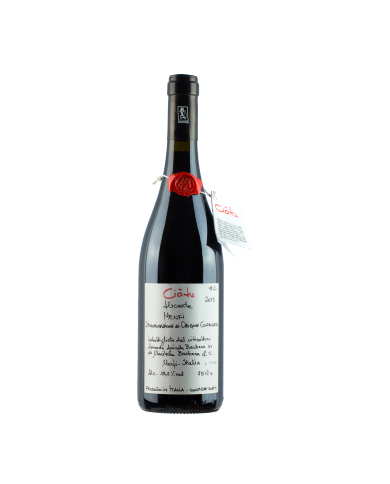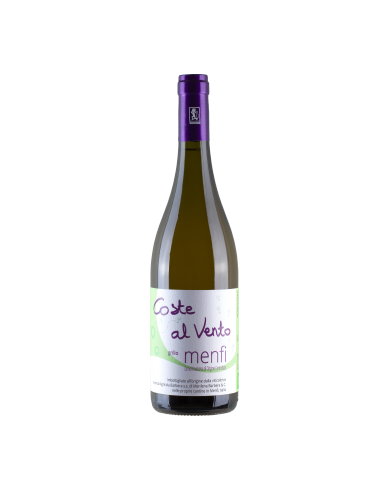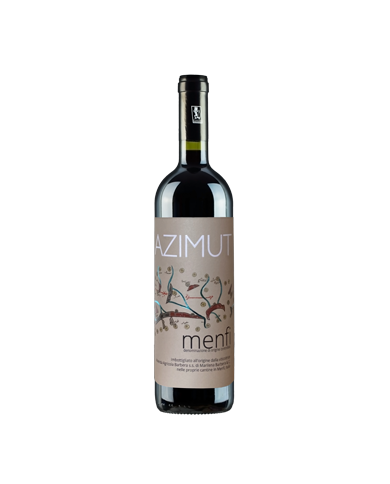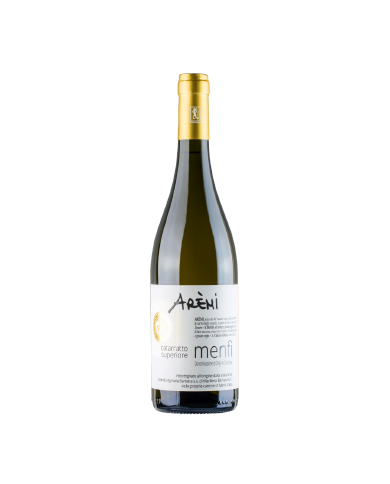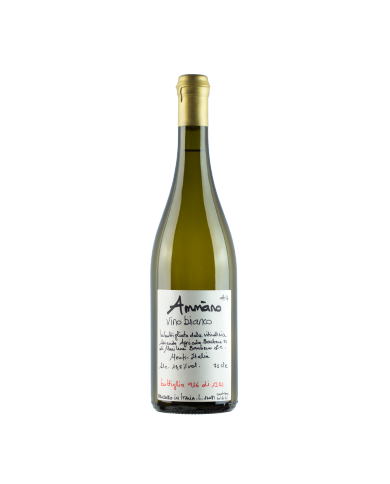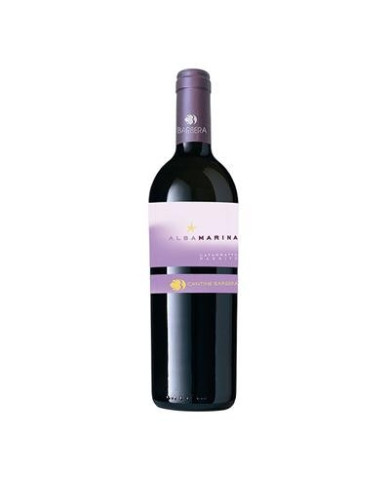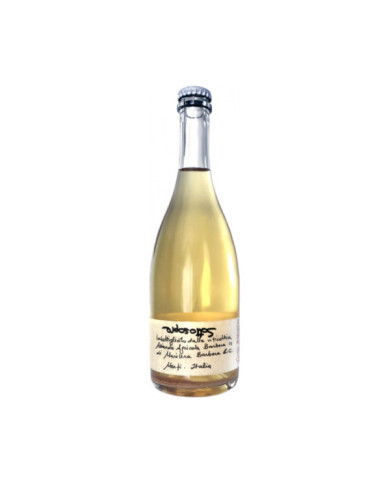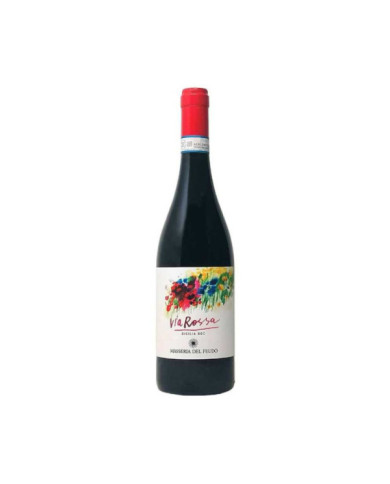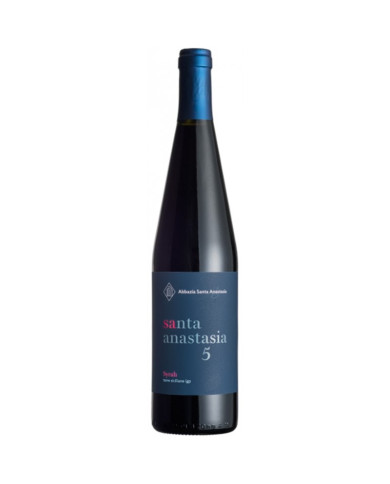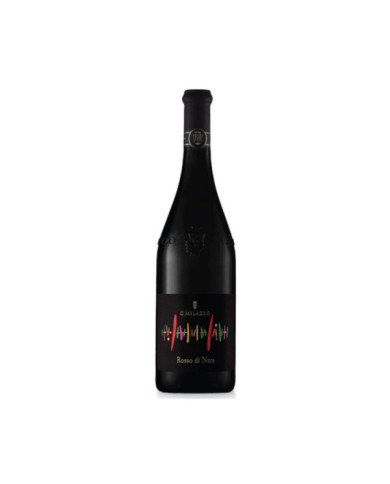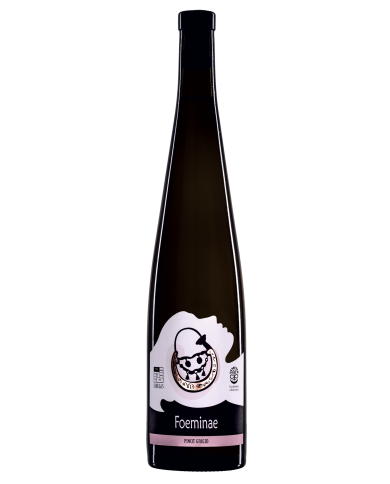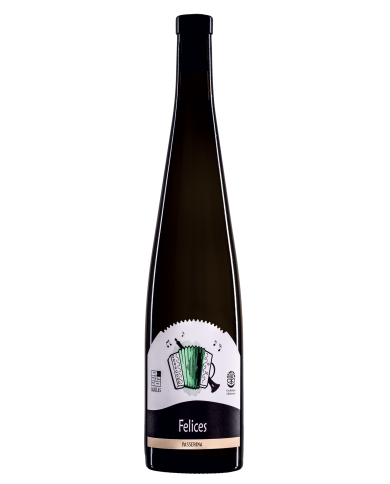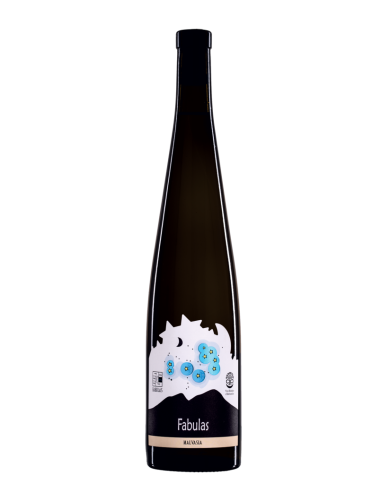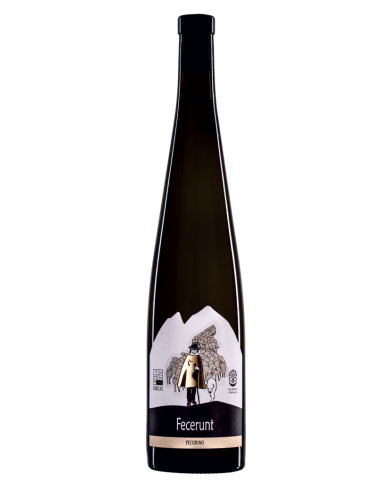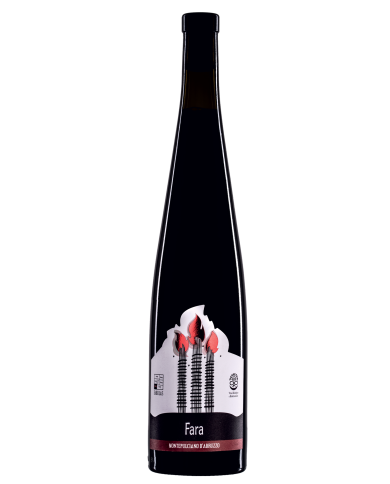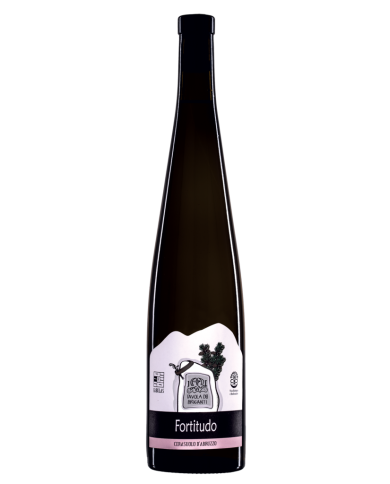Girolamo Russo's Etna Rosso Feudo di Mezzo has still young and slightly rough tannins. Of an intense ruby red, it offers hints of ripe fruit, cherry, marasca cherry, aromatic herbs, balsamic essences and notes of vanilla and tobacco on the nose. On the palate it is soft, but with tannins still a little rough, with an excellent structure, a complex of great fullness of taste and persistence
Girolamo Russo's Etna Rosso Feudo di Mezzo has still young and slightly rough tannins. Of an intense ruby red, it offers hints of ripe fruit, cherry, marasca cherry, aromatic herbs, balsamic essences and notes of vanilla and tobacco on the nose. On the palate it is soft, but with tannins still a little rough, with an excellent structure, a complex of great fullness of taste and persistence
Girolamo Russo's Etna Rosato was born in the lower old vineyards located in the San Lorenzo district, in the extraordinary wine-growing panorama of Etna, a terroir particularly suited to the production of wines of great value, thanks to unique temperature ranges.
The red Etna Calderara Sottana by Girolamo Russo was born in the vineyards located in the Contrada Calderara Sottana district in Randazzo, in the extraordinary wine-growing panorama of Etna, a terroir particularly suited to the production of wines of great value, thanks to unique temperature ranges.
Vibrant and decisive, NoTrix is direct and transparent: it does not want and does not need "embellishments". It is a wine with a brilliant ruby colour, with intense and playful scents of red fruits and geranium flowers. Its solid and well integrated tannins support a palate with an agile and dynamic body, where spicy notes of ginger and star anise accompany the drink towards a saline and very persistent finish. This is how Perricone is, and this is how I like this wine to be: without tricks and without falsehoods, far from oenological models that do not belong to the Menfi winemaking tradition.
Feminine and sensual, Lu C├▓ri tells of a Sicily kissed by the sun and caressed by sea breezes. Its splendid purple livery, edged with violet reflections in its youth, evolves towards ruby with the passing of the years. Ripe red fruits, especially blackberries and raspberries, characterize the bouquet, made intriguing by notes of brine and a slight spiciness. In the mouth it is fragrant, soft and velvety, with delicate tannins, perfectly integrated in a juicy and persistent finish.
The Little Girl is play, curiosity, discovery. It is the wine that I have dedicated to women, to their strength, to their ability to fight for what they believe in without being frightened by difficulties. Its delicately coppery color is fascinating as a prelude to a fragrant bouquet of wild rose and wild strawberries, pomegranate, watermelon and lemon peel. Savory and crunchy on the palate, it is a very pleasant wine, whose persistence is accentuated by an iodized, almost marine finish.
The old vineyards of Inzolia planted by my father more than fifty years ago are an extraordinary legacy on which to build the future of viticulture in Belicello. The original clones, perfectly adapted to the particular conditions of the environment to which they belong, exuberantly express the personality and wine culture of the Menfi area. The soil, mainly calcareous and pebbly, gives the wine an intense and at the same time delicate sapidity, great depth and aromatic breadth.
Alicante is a variety of Spanish origin, introduced in Sicily during the dominations of the XV-XVI century and widespread in many regions of the Mediterranean, where it is also known by the name of Garnacha, Grenache and Cannonau. In Menfi its personality is influenced by the marine microclimate which enriches the typical fruity softness of the vine with a particular saline note and makes the wine very expressive and very pleasant. Ci├Ātu is love, it is breath and breath, it is the energy of the sun, the profound strength of the earth, the very breath of life.
In Sicily, "coast" is the side of the hills that gently slope down to the sea, covered by vineyards as far as the eye can see that bask in the sun, unkempt by the fresh Mediterranean breezes. These are the places of Grillo, a fascinating native variety that interprets the beauty of the Menfi terroir with great personality. Son of generous lands, Coste al Vento gives us a full and ripe fruit that blends with the brackish notes brought by the sea winds, in a harmonious crescendo made original by maceration on the skins and fermentation with indigenous yeasts.
Ar├©mi, one of the four suits with which the gambling cards are painted, as well as the community cards. The coin suit, which has the color of gold and like gold is precious in the game of broom and seven and a half. Catarratto is liquid gold, culuri d'ar├©mi: intense and brilliant gold that lights up from the sun and the sea of Sicily, full of the millenary history that skilled hands have handed down to us, from generation to generation, from the Greek motherland to the fertile countryside of Memphis. Ar├©mi is love for the land, respect for knowledge, conscious acceptance of a heritage to be preserved.
By hand, to recover the value of manual work, the care and joy in doing it. By hand, to underline the absolute craftsmanship of the production of a wine made without the aid of machinery, without additives or synthetic oenological products, in which the human component is at least as important as the natural one. Only grapes and hands: in a world where machines and homologation increasingly replace man and his creativity, hands are, perhaps, the thing to which we must return.
Sottosopra is a sparkling wine obtained with the ancestral method and is bottled without prior disgorgement. If you love strong flavours, drink it as it is, with all its yeasts, or keep it upside down in the fridge for 24 hours if you want to disgorge it before tasting it. Intense golden yellow, very veiled because still on its lees. ...
Produced from Nero d'Avola grapes with the short Charmat method, Rosso di Nera di Milazzo is a young and fruity sparkling Sicilian wine, whose sweetness blends with the fresh and acidic profile.
Discover the secrets of Sicilian wines: A journey through the winemaking tradition of Southern Italy
Sicily is one of the richest regions of Italy both for its history and for its winemaking tradition. Sicilian wines are among the most appreciated in the world and are famous for their quality. In this article we will discover what the secrets of these delicacies are and how to enjoy them to the fullest.
Sicilian Wines: An ancient and rich history
The tradition of wine production in Sicily dates back to the Greco-Roman period, when the island was rich in native varieties. Over the centuries, the production of Sicilian wines has remained at the heart of the region's culture and economy. Today, Sicilian wines are famous all over the world for their unique quality.
Sicilian wines: variety and characteristics
There are numerous varieties of Sicilian wines. The most famous are Nero d'Avola, Nerello Mascalese, Frappato and Grecanico. These wines are characterized by a great aromatic complexity: hints of red fruits, spices, flowers and vanilla. Nero d'Avola is an intense, full-bodied red wine, while Nerello Mascalese is lighter and fruitier. Frappato is a light and aromatic ros├® wine, while Grecanico is a fresh and fruity white wine.
How to choose the right wine
Choosing the right wine comes down to personal preferences and the occasion. For example, if you want to drink a high quality red wine, then you should opt for a Nero d'Avola. If you want a lighter and fruitier wine, you can choose a Nerello Mascalese. For a white wine, Grecanico is a great choice.
How to serve a Sicilian wine
To enjoy a Sicilian wine to the fullest, it must be served at a temperature of 18-20┬░C. It is advisable to serve red wines in fairly large glasses, with a wider base and a narrower top. White wines, on the other hand, are served in smaller glasses with a narrower base and wider top.
The right combination
Each wine has its own ideal pairing. For example, Nero d'Avola is a very versatile wine and goes well with meat-based dishes, such as grilled steak for example. Nerello Mascalese, on the other hand, goes best with fish or vegetable dishes. Frappato is a wine that goes well with lighter dishes, such as a mixed salad. Grecanico is a wine that goes well with fish or vegetable dishes.
5 tips for Sicilian wines
1. Choose a quality wine. Sicily is full of excellent quality wines, so choose a product from a reliable producer.
2. Taste more wines. Taste multiple Sicilian wines to find out which one you like best.
3. Store wine well. Store Sicilian wines in a cool, dry place away from heat sources.
4. Choose a right match. Pair Sicilian wines with the right dishes to get a unique taste experience.
5. Don't be shy. Don't hesitate to drink Sicilian wine and experiment with new varieties.
Discovering the secrets of Sicilian wines is a unique experience. Sicily is one of the richest regions of Italy and Sicilian wines are among the finest in the world. In this article we have explored the history of these wines, their characteristics, how to choose and serve a Sicilian wine and how to pair it with the right dishes. By following these tips you will be able to enjoy these delicacies to the fullest and discover the secrets of Sicilian wines.
Denomination Wines of Sicily
Sicily is a region famous all over the world for its wine production. Thanks to the Mediterranean climate, the presence of volcanoes and the richness of the soil, the island is able to produce some of the most appreciated wines in the world. In this article we will explore the main denominations of Sicilian wines, their vines and their organoleptic characteristics, to discover the excellence of Sicilian wine production.
Introduction to wine production in Sicily
The production of wine in Sicily has very ancient roots, dating back to Greek and Roman times. The region boasts a great variety of soils, from the volcanoes of Etna and the Aeolian Islands to the hills of the hinterland, which allow for the cultivation of numerous native and international vines. Thanks to the use of innovative techniques and attention to quality, Sicilian wine production is constantly growing, offering the market high quality wines, capable of satisfying every palate.
The main denominations of Sicilian wines
The denominations of wines of Sicily are divided into four main categories: Denomination of Controlled Origin (DOC), Denomination of Controlled and Guaranteed Origin (DOCG), Typical Geographical Indication (IGT) and Table Wines. Let's see in detail the characteristics of each one.
Denomination of Controlled Origin (DOC)
The denomination of controlled origin (DOC) is a quality mark that is assigned to wines that meet specific production criteria. In Sicily there are 23 DOCs, among which Cerasuolo di Vittoria, Moscato di Pantelleria and Etna Rosso stand out.
Cerasuolo di Vittoria
Cerasuolo di Vittoria is a red wine produced in the south-eastern part of the island, in the province of Ragusa. The wine is produced with grapes from the Nero d'Avola and Frappato vine, in variable percentages, and has an intense ruby red colour, a fruity aroma and a dry and soft flavour. It goes perfectly with red meats, cured meats and aged cheeses.
Muscat of Pantelleria
Moscato di Pantelleria is a sweet wine produced on the island of Pantelleria, located southwest of Sicily. The wine is produced with grapes from the Moscato di Alessandria vine, locally called Zibibbo, and has an intense golden yellow colour, an intense and aromatic bouquet and a sweet and soft flavour. It goes perfectly with sweets and desserts.
Etna Red
Etna Rosso is a red wine produced on the slopes of Etna, the highest active volcano in Europe. This wine is mainly produced with grapes from the native Nerello Mascalese vine, which grows on volcanic and high altitude soils.
What is Sicily's most famous wine?
A: Sicily's most famous wine is Etna Rosso, a red wine produced on the slopes of Etna.
Denomination of Controlled and Guaranteed Origin (DOCG)
The denomination of controlled and guaranteed origin (DOCG) is the maximum expression of the quality of Italian wines. In Sicily there is only one DOCG, the Cerasuolo di Vittoria. This dry red wine is produced in the Vittoria area, in the province of Ragusa, with grapes of the Nero d'Avola and Frappato vine in variable percentages. The wine has a ruby red colour, a fruity aroma and a soft and persistent flavour. It goes perfectly with red meats, cured meats and aged cheeses.
Typical Geographical Indication (IGT)
The Typical Geographical Indication (IGT) identifies wines produced in a specific geographical area and which have some typical characteristics. In Sicily there are four IGTs: Terre Siciliane, Salina, Val di Mazara and Alcamo. IGT wines can be produced with international grape varieties, such as Chardonnay, Cabernet Sauvignon and Merlot, but also with native varieties.
Table wines
Table wines are wines produced in Sicily that do not fall into the DOC, DOCG or IGT categories. Despite this, many of them are of the highest quality, produced with native grapes and according to traditional methods. Among the best known are Nero d'Avola and Grillo.
Sicily is a region with a great winemaking tradition, which has been appreciated all over the world for the quality of its wines. Thanks to the presence of volcanoes, the Mediterranean climate and the variety of the terrain, the island is able to produce wines of the highest quality, capable of satisfying every palate. From DOC to IGT, from white wines to red wines, Sicilian wine production is a real winemaking excellence.
FAQs
What are the native vines of Sicily?
Among the main native vines of Sicily are Nero d'Avola, Frappato, Inzolia, Grillo and Zibibbo.
How many DOC wines are there in Sicily?
In Sicily there are 23 DOC wines.
What are the main pairings of Sicilian wines?
The red wines of Sicily go perfectly with red meats, cured meats and aged cheeses, while the white wines are ideal with fish dishes, seafood and fresh cheeses.
What is the difference between DOC and DOCG?
The main difference between DOC and DOCG is that DOCG guarantees a superior quality of wine, with even stricter production criteria and more frequent controls.
What are the best known wines of Sicily?
Among the best known wines of Sicily are Etna Rosso, Cerasuolo di Vittoria, Nero d'Avola and Grillo.

